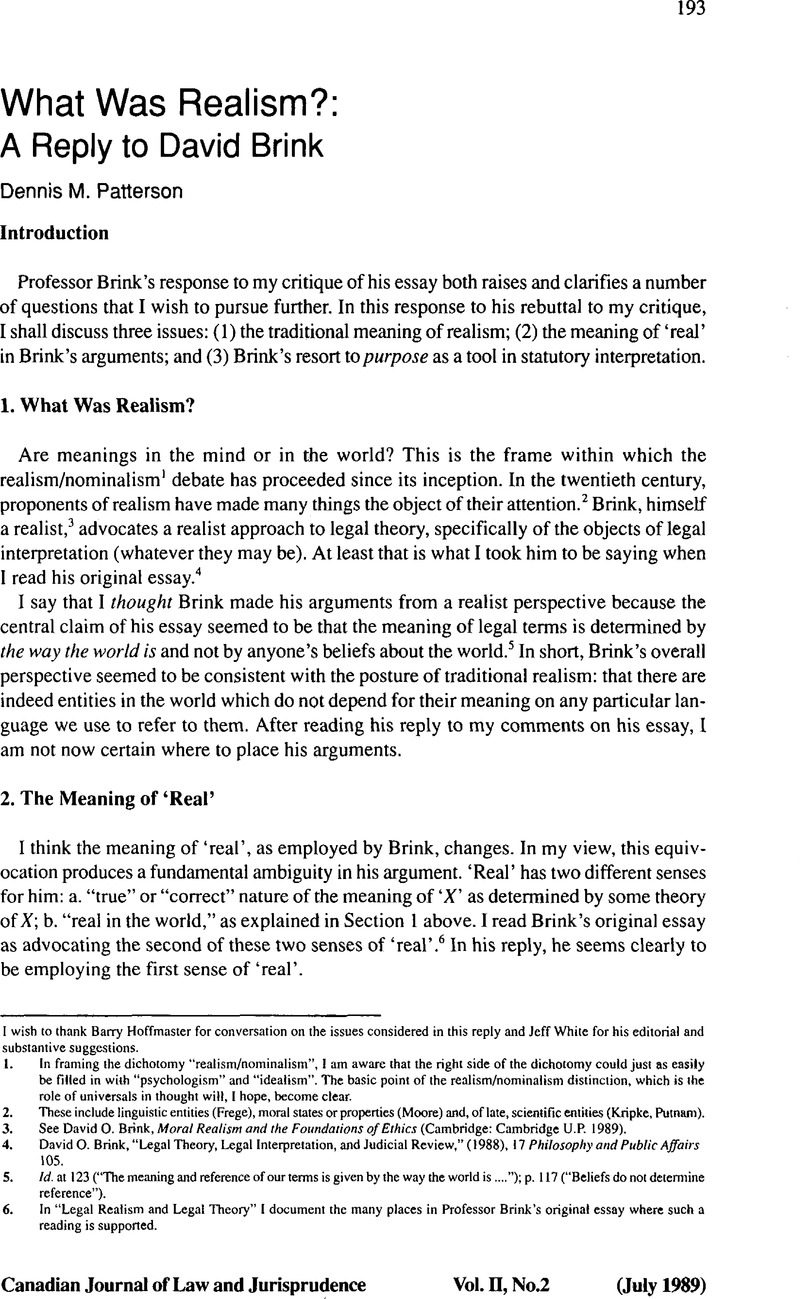Article contents
What Was Realism?: A Reply to David Brink
Published online by Cambridge University Press: 09 June 2015
Abstract

- Type
- Reply
- Information
- Copyright
- Copyright © Canadian Journal of Law and Jurisprudence 1989
References
I wish to thank Barry Hoffmaster for conversation on the issues considered in this reply and Jeff White for his editorial and substantive suggestions.
1. In framing the dichotomy “realism/nominalism”, I am aware that the right side of the dichotomy could just as easily be filled in with “psychologism” and “idealism”. The basic point of the realism/nominalism distinction, which is the role of universals in thought will, I hope, become clear.
2. These include linguistic entities (Frege), moral states or properties (Moore) and, of late, scientific entities (Kripke, Putnam).
3. See Brink, David O., Moral Realism and the Foundations of Ethics (Cambridge: Cambridge U.P. 1989).CrossRefGoogle Scholar
4. Brink, David O., “Legal Theory, Legal Interpretation, and Judicial Review,” (1988), 17 Philosophy and Public Affairs 105.Google Scholar
5. Id. at 123 (“The meaning and reference of our terms is given by the way the world is ....”); p. 117 (“Beliefs do not determine reference”).
6. In “Legal Realism and Legal Theory” I document the many places in Professor Brink’s original essay where such a reading is supported.
7. David O. Brink, “Semantics and Legal Interpretation (Further Thoughts),” (1989), II Canadian Journal of Law and Jurisprudence 184 [hereinafter “Further Thoughts”.]
8. At least I get that sense that the use of the phrase “real nature of the phenomena”.
9. “Further Thoughts”, p. 185.
10. Id. (emphasis added).
11. Id. at 186.
12. Id. at 188.
- 4
- Cited by


